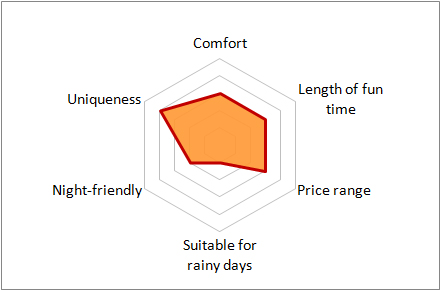Description
- It enshrines the Ako Roshi (Ako Gishi) who is famous for the episode “Chushingura” where he avenges his lord.
- There is also a graveyard of Ako Roshi within the temple grounds, which you can visit. (300 yen for incense sticks)
- There is also a museum of Ako Roshi. (admission fee: 500 yen)
Reviews by situation
“Relaxing alone” Recommended: 4 /4 points
It is often relatively empty, so you can visit at your own pace.
“Having fun with the kids” Recommended: 2 /4 points
You should first tell your children about the Ako Roshi story.
“Getting into the mood on a date” Recommended: 1 /4 points
Not suitable for a date.
“Getting along with friends” Recommendation level: 2 /4 points
If you are both interested, it might be worth considering.
Trend Chart

“Comfort” Rating: 3 /5 points
The interior is not large, but there are not many people, so you can look around at your leisure. There are not many benches.
“Length of fun time” Rating: 3 /5 points
It will take more than an hour to visit the graves and the memorial hall.
“Price range” Rating: 3 /5 points
There is an admission fee to visit the graves, but this is used to cover the cost of incense.
“Suitable for rainy days” Rating: 1 /5 points
As it is outdoors, you will need to take precautions against rain.
“Night-friendly” Rating: 2 /5 points
At night, you can only visit the temple.
“Uniqueness” Rating: 4 /5 points
This is the famous temple associated with the Ako Roshi.
Business Hours
AM7:00 to PM5:00 (cemetery)
AM9:00 to PM4:00 (Ako Gishi Museum)
Closed Days
None
English Support
Some information is written in English, and there is also English audio guidance.
Fees
Free (admission)
One adult…300yen (cemetery, cash only)
One adult…500yen (Ako Gishi Museum, cash / credit card / SUICA)
Access
The nearest station is Exit 2 of Sengaku-ji Station (Toei Asakusa Line / Keikyu Line). Go up the hill and it’s right in front of you. Additionally, it is about a 10 minute walk from Takanawa Gateway Station (JR Yamanote Line / JR Keihin Tohoku Line).
Main limited-time events
The Spring Gishi Festival is held for a week in early April, with a procession for each of the loyal retainers to offer prayers. On December 14th, the Winter Gishi Festival is held, with a procession for each of the loyal retainers to offer prayers.
Official website
https://sengakuji.or.jp/about_sengakuji_en/
Nearby spots
Happo-en
It is famous as a wedding hall and banquet hall, but anyone can enter the Japanese garden for free.
Maxell Aqua-park Shinagawa
An aquarium with sounds and neon lights. It is also open at night.
Zojo-ji Temple
This is an old temple that is said to have been built around the 9th century. The symbol is a huge red gate.









